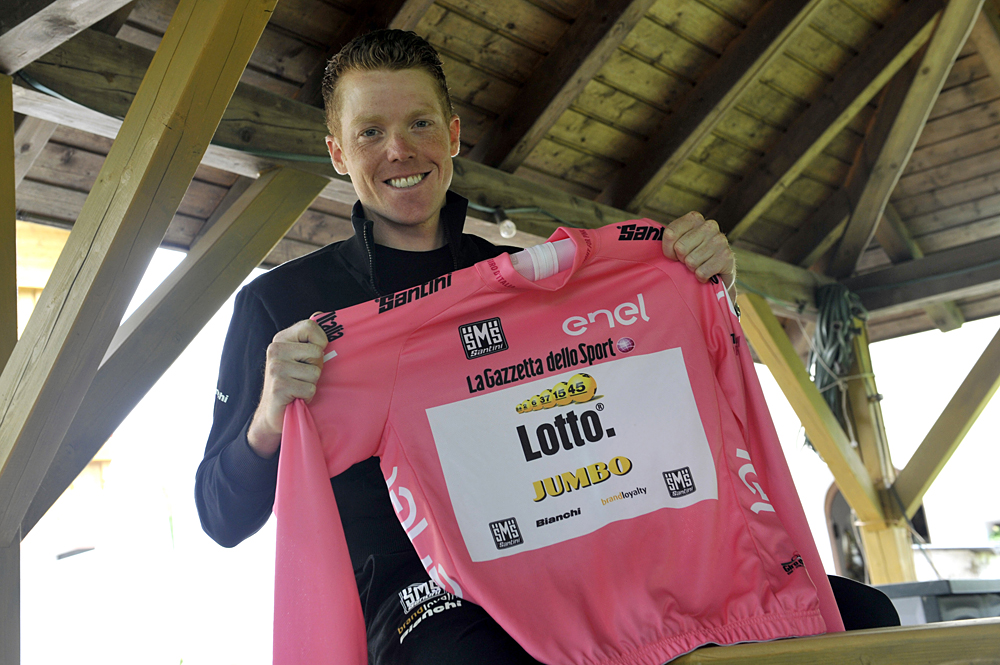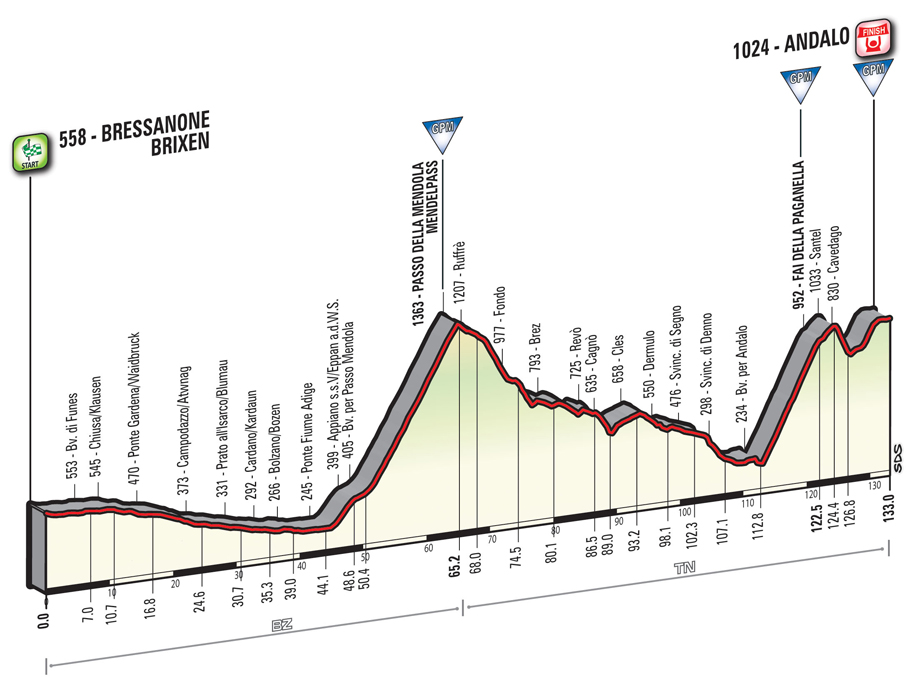Preview: Giro d’Italia resumes with short but very sharp stage 16 to Andalo
Passo della Mendola and Fai della Paganella await peloton after rest day





The mammoth legs in the Alps next weekend may have drawn the eye when the Giro d’Italia route was presented in Milan last October, but beware the first stage after a rest day: hostilities resume on Tuesday with a short, sharp leg to Andalo that could well provoke further ructions in the general classification.
Just 132 kilometres in length and boasting two tough category 2 climbs, stage 16 of the Giro will provide a rather abrupt return to action after the rest day. Anybody struggling to get back up to speed quickly could be in for a far more arduous afternoon than the road book might have suggested – particularly as the miserable weather in South Tyrol meant that many riders were restricted to training on the rollers on Monday morning.
“Tomorrow is a hard stage, especially because it’s not long, so it could be a very intense stage from the start,” Vincenzo Nibali (Astana) warned during the rest day.
There is almost certain to be a brisk start to proceedings. The opening 50 kilometres see the peloton descend gradually from the start in Bressanone, by way of Bolzano, before they hit the foot of the day’s first climb, the Passo della Mendola.
With an average gradient of 6.5% and a maximum of 10%, the Mendola is by no means a particularly difficult ascent, but it is some 14.8 kilometres in length and provides precious little respite all the way up.
Another lengthy descent follows the Passo della Mendola, with the route dropping via Cles – home of Maurizio Fondriest – to the base of the day’s second ascent, the shorter but steeper Fai della Paganella. The road climbs for 10 kilometres at an average gradient of 7.4% and features slopes of 15% just shy of the summit. “Those second-category climbs are really first-category, or even more than that,” Alejandro Valverde (Movistar) complained.
Nibali knows the climb well, having struggled here at last month’s Giro del Trentino, though the finale at the Giro d’Italia is different. A steep, four-kilometre descent follows the summit of Fai della Paganella, before the road kicks up again for the third category haul to the finish.
The latest race content, interviews, features, reviews and expert buying guides, direct to your inbox!
The six-kilometre climb begins very gently but then gradually pitches up to 9% before flattening out again in the final two kilometres, with just a gentle uphill drag to the finish line in Andalo.
All told, the stage will scarcely last three and a half hours, but as the even shorter leg to Alpe d’Huez at the 2011 Tour de France showed, that might well be enough to turn the race on its head. By the third week of a Grand Tour, a great deal of the softening-up process has already taken place, and tired legs abound.
For more on this...
- Giro d'Italia: Analysing the GC contenders after week two
- Steven Kruijswijk's Bianchi Specialissima time trial bike - Gallery
- Nibali looks to claw his way out of Hell at Giro d'Italia
- Chaves all smiles but serious about his Giro d'Italia ambitions
- Kruijswijk: I feel really strong after this weekend
A test for LottoNL-Jumbo
The short stage will be the first test of the LottoNL-Jumbo team’s ability to defend Steven Kruijswijk’s maglia rosa. The Dutchman was hugely impressive over the weekend in the Dolomites, attacking over the Passo Valparola and coming within a hair’s breadth of winning the mountain time trial to Alpe di Siusi, but in a sense, his race begins all over again on Tuesday.
Now carrying a lead of 2:12 over Esteban Chaves (Orica-GreenEdge), 2:51 over Nibali and 3:29 over Valverde, Kruijswijk will face a challenge different to any he has yet faced at this Giro – or at any other in his career. Rather than looking to snatch seconds here and there, Kruijswijk must now defend himself against the inevitable onslaught from Astana, and possibly Movistar, in the coming days, and it remains to be seen if his team is up to the task.
“If we end up with a crazy race, it will be difficult for one man to control alone,” Nibali said of Kruijswijk and his LottoNL-Jumbo team.
Valverde and Nibali’s setbacks on Saturday and Sunday, respectively, have left them with similar amounts of ground to recoup in the final week, and, in theory, could make them natural allies of circumstance in the coming days.
That assumes, however, that each man has similar ambitions for the remainder of the Giro. While nothing less than overall victory will satisfy Nibali and his constituency, Movistar seemed to have already revised Valverde’s ambitions downwards to a podium place after his travails on stage 14 to Corvara, and he will surely be less willing to throw caution to the wind. No matter, Tuesday’s short, sharp leg to Andalo, will provide some indication as to whether Nibali and Valverde can find common ground over the course of the Giro’s demanding final week.
Kruijswijk, meanwhile, described Chaves as his biggest threat during his rest day press conference, and the top two on general classification were certainly the best performers in the Dolomites. Recent history shows, however, that the pendulum can swing quickly in the third week of the Giro. A lot can happen in 132 kilometres.

Barry Ryan was Head of Features at Cyclingnews. He has covered professional cycling since 2010, reporting from the Tour de France, Giro d’Italia and events from Argentina to Japan. His writing has appeared in The Independent, Procycling and Cycling Plus. He is the author of The Ascent: Sean Kelly, Stephen Roche and the Rise of Irish Cycling’s Golden Generation, published by Gill Books.